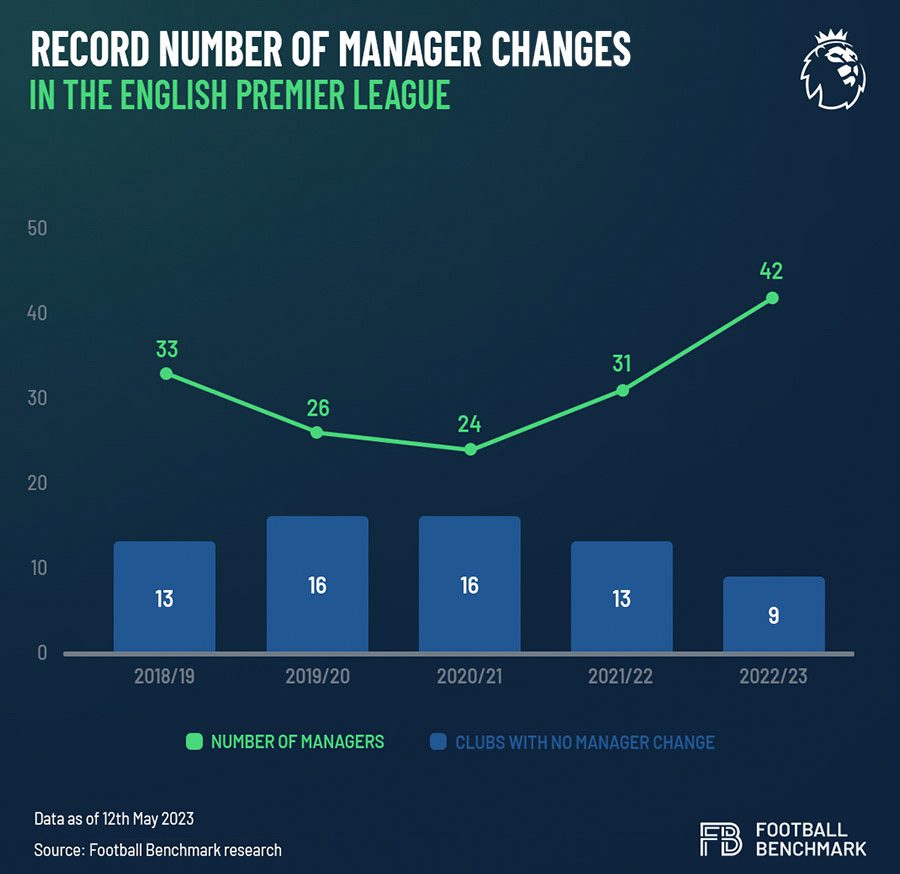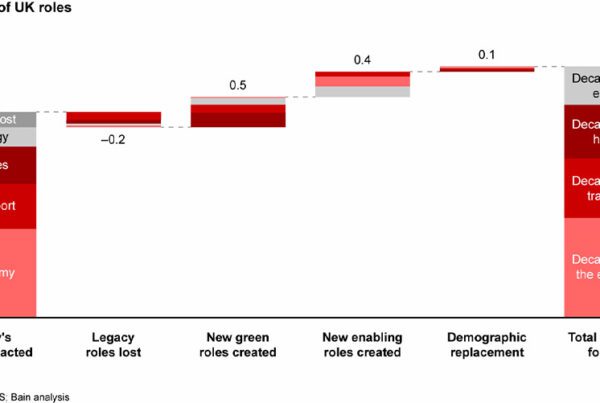The last season of football has seen a huge leap in the number of managers being hired and fired, across Europe’s five biggest top divisions. The pre-pandemic aggregate figure of 147 across the English, French, Italian, Spanish and German leagues ballooned to 170 before the season has even ended, according to a new study, even as a ‘new manager bounce’ has been far from guaranteed.
In the chaotic world of professional sports, the managers who last long enough to begin a ‘dynasty’ – the Fergusons, Wengers or Guardiolas of the game – are the exception rather than the rule. While the owners of clubs regularly involved in relegation scraps are well known for their itchy trigger-fingers, when ousting their managers, success offers little security either. Boards of top clubs rarely show faith in their head coaches during a blip – even after league, or even Champions League winning seasons – as the likes of Jose Mourinho, Carlo Ancelotti, Thomas Tuchel and Julian Nagelsmann have all found to their cost over the last decade.
Even in that context, however, a new study from Football Benchmark has found the 2022/23 season saw a remarkable upsurge in manager turnover. With the top five league of Europe having just 98 clubs between them, the total of 170 head coaches employed for at least one match across the divisions means that by May 2023, clubs had worked with an average of 1.73 managers during the season. This represents a 26% rise from the previous campaign.

The Premier League has accounted for a large part of this up-swing. The league’s pre-pandemic high of 33 changes had not been matched since the lockdown era, but the current campaign had seen 42 switches – including interim coaches – by the time Football Benchmark published its findings; up from 31 the previous campaign.
As clubs continue to struggle to right their financial positions in the wake of Covid-19, or adjust for sanctions against oligarchs who had previously been benefactors of their organisations, the pressure to win has undoubtedly become higher than ever before. This has led to Chelsea and Everton burning through five managers between them over the last season – with the Toffees sacking Frank Lampard amid a relegation struggle that reportedly presents the club an existential threat months before Chelsea called upon the club legend to see out the season, following the ill-fated reign of Graham Potter.
Potter had himself been a replacement for Thomas Tuchel – binned with the club sitting sixth in the table. In the end, neither appointment seems to have worked, with Football Benchmark’s analysis showing Chelsea fell a further five places after the first switch, and stagnated in 11th until the time the firm published its report (the club has since sunk to 12th). The jury is out on the extent to which sacking Frank Lampard helped the club’s season, but considering the Merseyside club were 19th when they moved him on, Sean Dyche’s current 17th place – with relegation still a possibility – is at least a marginal improvement.
Of course, there have been examples of managers coming into a club mid-season and helping their club to shoot up the table. Julen Lopetegui was sacked by Sevilla at the start of October 2022, two years after guiding the La Liga club to a record sixth Europa League crown. A month later, he was installed as the manager of Wolverhampton Wanderers, with the Molineux club rooted to the bottom of the Premier League, with one win in 15 matches. Wolves currently sits 13th, having comfortably avoided relegation. Meanwhile, Aston Villa also looked in danger of the drop when Unai Emery took over, but he took the Villans from 17th to the brink of the European places in the months since. But these seem to be the exception, not the rule.

Indeed, of 14 managerial changes which Football Benchmark evaluated, just five saw the club’s league position improve by more than one place. Six either did not improve, or got even worse. This suggests that an overbearing owner or hyperactive board have just as much chance of hindering their clubs progress as helping it. Looking ahead, club owners and boards may want to think more carefully when evaluating their current management team.
Reports in the press suggested the Nottingham Forrest’s hierarchy spent the year weighing up whether to stick or twist with Steve Cooper – who brought the club back into the division after a two-decade absence. In the end, it seems their decision to stand by their man proved to be the right one; having sunk to the relegation zone at multiple points, the club confirmed its Premier League status with an impressive 1-0 win over second-placed Arsenal in mid-May. In stark contrast, Leeds sacked both Jesse Marsch and Javi Gracia while in 17th place. Going to the final day of the season, the club is 18th under its third manager, purported relegation-specialist Sam Allardyce.
Andrea Sartori, CEO of Football Benchmark, commented, “Overall, while it may seem like firing coaches is a quick fix for underperforming clubs, it is also important for them to consider the long-term implications of this decision. Frequent coaching changes can lead to instability, both on and off the field, and can make it difficult for teams to establish a consistent style of play and culture. It is important for teams to carefully evaluate the situation before making any decisions, and to consider alternative solutions before resorting to firing a coach. Ultimately, getting this decision right will go a long way, not only in terms of sporting performance, but also off the pitch, including financial results and brand development.”




